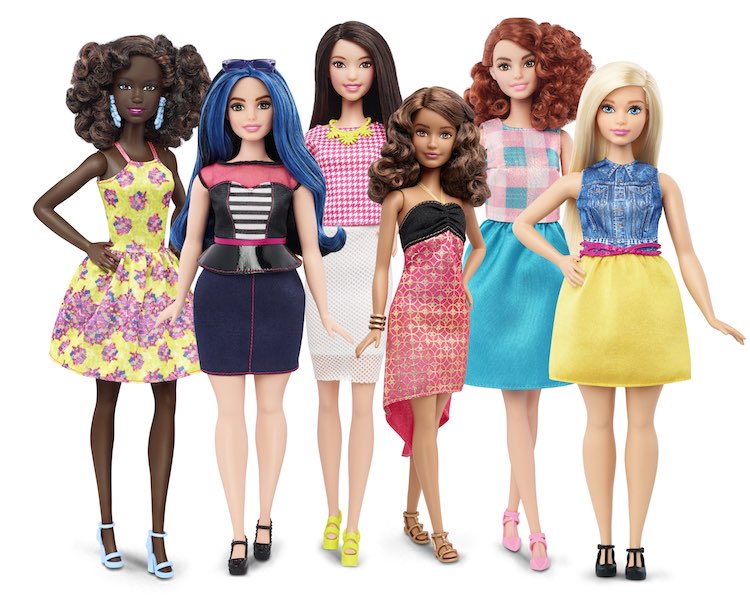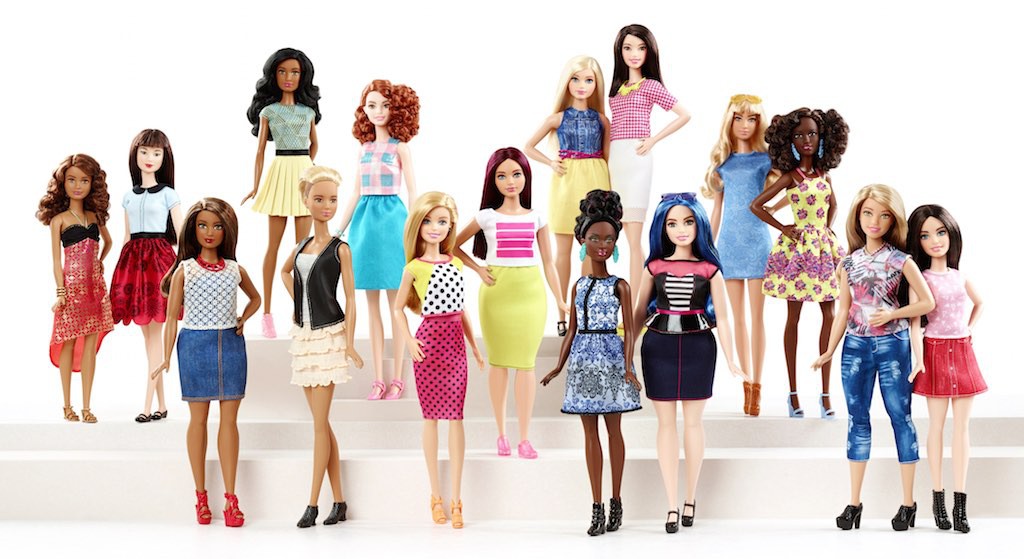
The team behind Barbie anticipated controversy when they released images of their newest dolls to the press yesterday. The new range includes three body shapes – petite, tall and curvy – along with seven skin colours and 24 different hair styles.
“There will be people who say we haven’t gone far enough, or people who ask what’s next, question our commitment to this,” Tania Missad, Mattel’s director of global brand insights, told the Telegraph. “Barbie is a lightning rod for conversation, and of course there will be a backlash.”
But if there has been a backlash – I haven’t seen it so far. Most people have reacted positively to this change, which was foregrounded by Barbie’s attempt at feminist advertising last year. This saw them pose the question, “What happens when girls are free to imagine they can be anything?”
“The Mattel ad… is meant to be empowering to little girls — and it is!” wrote Tess Koman in Cosmopolitan (itself not a bastion of feminism) when the advert was released, but most commentators called it out because the physical representations of Barbie were still so out of proportion. “Imaginations are limited when girls are given only a narrowly defined idea of what being a woman looks like,” wrote Jessica Valenti in the Guardian.
In contrast, the Guardian released an article today titled Barbie’s big makeover – a welcome change that’s ‘ridiculously late’. This is despite the fact that, as the press images show, the “curvy” doll is still pretty svelte by anyone’s standards, the black model has been given a head of weird looking auburn curls instead of, you know, afro hair, and they have retained the neotenous facial features of the traditional Barbie, which don’t really allow for wider noses or narrow eyes.
“The black model has been given a head of weird looking auburn curls instead of, you know, afro hair”
That Mattel have essentially admitted that this move in a more diverse direction is a business plan rather than a genuine move to recognise the subtle impact their products have on the body ideals cultivated by young girls is also frustrating.
They, like many other companies, including Dove and Venus, picked up on the trend of female empowerment in 2015 and are using it to their advantage. Barbie have been running on a year-on-year decline in profits, and they are hoping that this will change their fortunes.
My main question is why, if Mattel knew that some people, like me, were going to say that they haven’t gone far enough, why didn’t they go far enough? Would it have been too much to ask to see a doll from them that really breaks down body-ideal-norms?
Maybe I’m being too sceptical, and their commitment to change is real, but at the moment Barbie, I’m sorry, it’s just not good enough.








